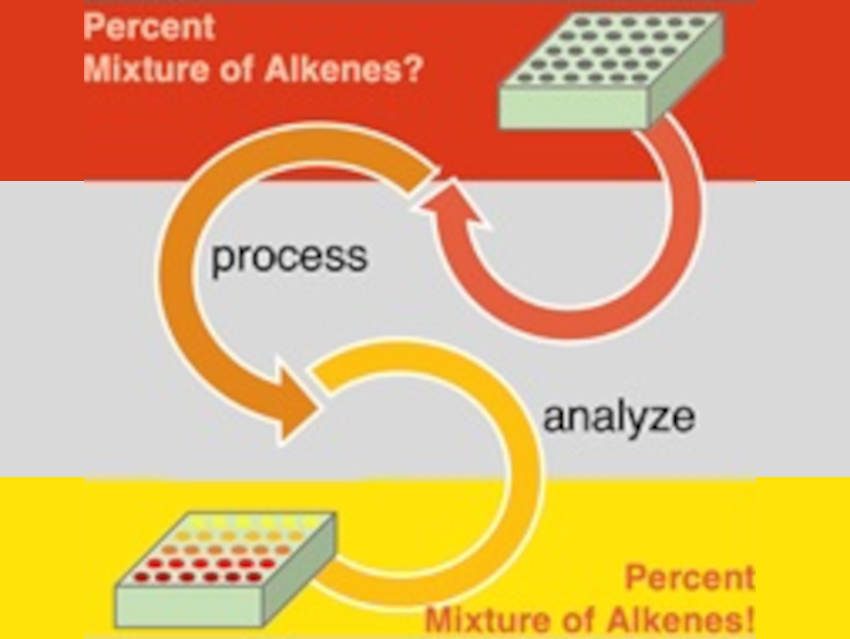In high-throughput reaction screening procedures, analytical methods that can be performed quickly and in parallel are useful to, for example, determine the enantiomeric excess (ee) or diastereomeric ratio (dr) of the products. Optical assays can be useful for this type of application. However, no optical method for the determination of the ratio of cis– and trans-alkenes had been developed so far.
Eric V. Anslyn, The University of Texas at Austin, USA, and Queen’s University Belfast, UK, and colleagues have developed a colorimetric method for quantifying the ratio of cis– and trans-alkenes using a so-called indicator displacement assay (IDA). In this approach, samples are placed in 96-well plates and the alkenes in the samples are dihydroxylated in a stereospecific fashion using, e.g., osmium tetroxide (reactions pictured below, NMO = N-methyl morpholine-N-oxide).

The resulting 1,2-diols can displace the indicator from a host–indicator complex, causing color changes. 2-pyrrolidinylmethyl-phenylboronic acid was used as the host and pyrocatechol violet as the indicator. The different diol stereoisomers have different affinities for the host and displace different amounts of the indicator. Thus, the resulting color changes can be used to determine whether more cis– or trans-alkenes were present in the original samples.
With this protocol, the percentages of cis– and trans-alkenes within mixtures can be measured with average errors as small as 2–3 %. The method is suitable for a high-throughput experimentation workflow because of the use of parallel analysis in plates instead of serial methods such as NMR spectroscopy or chromatography.
- A Colorimetric Method for Quantifying Cis and Trans Alkenes Using an Indicator Displacement Assay,
Stephanie A. Valenzuela, Hannah S. N. Crory, Chao‐Yi Yao, James R. Howard, Gabriel Saucedo, A. Prasanna Silva, Eric V. Anslyn,
Angew. Chem. Int. Ed. 2021.
https://doi.org/10.1002/anie.202101004




